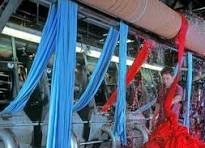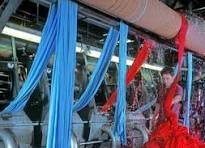

DYEING

- Mar 09th, 2024
Introduction to Dyeing Services for Fabrics
Dyeing services for fabrics refer to the process of adding color to textiles through various methods, using different types of dyes and techniques. These services are essential for a wide range of industries, including fashion, interior design, home textiles, and industrial applications. The goal of fabric dyeing is to enhance the aesthetic appeal, functionality, and durability of the material while offering a range of color options for consumers.
The dyeing process can be carried out on different types of fabrics, including natural fibers (like cotton, wool, and silk) and synthetic fibers (such as polyester and nylon). Depending on the fabric and the desired outcome, dyeing services may involve several stages, including preparation, dye application, and post-dye treatments like washing or setting.
Key dyeing techniques used in the industry include:
- Batch Dyeing: In this method, fabrics are immersed in dye baths where the dye penetrates the material in large batches. It is commonly used for materials that require a uniform color.
- Piece Dyeing: Here, the fabric is dyed after it has been woven or knitted. This technique is popular for solid-colored fabrics.
- Hand Dyeing: A more creative and labor-intensive method, hand dyeing involves the manual application of dyes to fabrics, often resulting in unique, one-of-a-kind patterns.
- Tie-Dyeing and Batik: These are traditional and artistic techniques that involve manipulating fabric before dyeing to create distinctive patterns through resist methods.
- Digital Fabric Printing and Dye Sublimation: With technological advancements, digital dyeing processes now allow for intricate, detailed designs to be printed directly onto fabrics using specialized dye inks.
Dyeing services are crucial for businesses and individuals who require high-quality, precise color results. They are widely used in the fashion industry to create trendy colors and patterns, in home decor to provide vibrant textiles for upholstery and curtains, and in manufacturing for textiles used in industrial applications.
The dyeing industry also places emphasis on sustainability, with increasing focus on eco-friendly dyes and water-efficient processes. As consumer demand grows for environmentally responsible production methods, the fabric dyeing industry is innovating with organic dyes, waterless dyeing technologies, and closed-loop systems to reduce environmental impact.
Whether for fashion, home decor, or industrial uses, fabric dyeing services play a significant role in creating the colors, patterns, and textures that influence design and trends across the globe.












